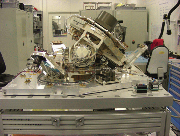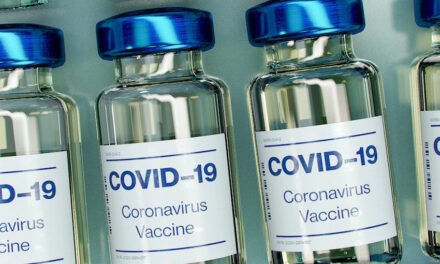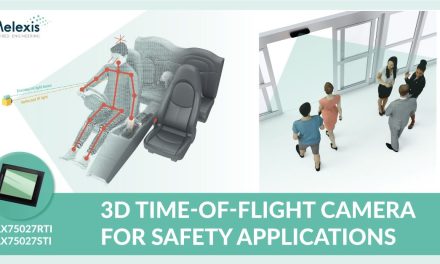 Precision servo inclinometers from Sherborne Sensors are being used during life testing of a satellite Thruster Orientation Mechanism
Precision servo inclinometers from Sherborne Sensors are being used during life testing of a satellite Thruster Orientation Mechanism
As a supplier of space technology, RUAG Space provides precision mechanisms for pointing, deployment and high-performance separation in spacecraft applications. In fact most European Space Agency (ESA) satellites employ RUAG’s structures, with examples being the primary deployment mechanism of the solar array for the Hubble Space Telescope, the separation system of the Huygens Probe from the Cassini Spacecraft, and the electrical propulsion pointing (EP) mechanism for the SMART-1 and Artemis satellites.
Pointing mechanisms and EP thrusters are used by commercial satellites for moving from launch orbit into their real orbit and to perform micro-positioning manoeuvres. Meeting demands, RUAG has developed a thruster orientation mechanism (TOM) that simplifies the design of a satellite by having two TOMs instead of the eight stationary thruster units employed in conventional designs. Each TOM features one or two thrusters mounted on a gimbal structure and is powered by actuators.
Capable of supporting the largest range of thruster combinations and thruster mass in the market today,the new TOM means only a quarter of the normal amount of Xenon tubing is required to supply fuel to the EP thrusters.
Testing
The TOM has to accommodate the environmental loads induced during launch and spacecraft separation from the launch vehicle, as well as the extremes of temperature experienced in space. As a result, it has been subjected to a design qualification test programme that entailed rigorous functional and performance tests in order to demonstrate and verify its performance against everything it can reasonably expect to experience – from manufacture through mission to end-of-life, which could be ten years or more.
A variant of Sherborne Sensors’ LSI Servo Inclinometer has been developed to meet the rigours of these tests.
This self-contained, precision gravity-referenced servo inclinometer was mounted on the TOM qualification model in order to perform three key tests: mechanical pointing accuracy, potentiometer verification and motor margin. Tests were conducted in a large vacuum chamber, where an extremely low pressure of 10-7mbar is achieved. This ‘hard vacuum’ simulates the in-orbit environment.
 Measurement devices capable of operating at this very low pressure are not easy to find, explained the company. Sherborne, however, was able to ensure that the inclinometers fulfilled all requirements, including being suitable for operation between -40°C and +40°C under hard vacuum conditions, while being accurate.
Measurement devices capable of operating at this very low pressure are not easy to find, explained the company. Sherborne, however, was able to ensure that the inclinometers fulfilled all requirements, including being suitable for operation between -40°C and +40°C under hard vacuum conditions, while being accurate.
In a high vacuum environment, the outgassing of organic compounds such as adhesives and rubber can destroy the vacuum conditions and potentially ruin the tests. Sherborne Sensors was therefore careful to ensure that the inclinometer did not contain any compounds that would suffer this deficiency. In addition, to counter the effect of differential pressure between the sealed case of the inclinometer and the vacuum conditions, its case was provided with a vent to allow the internal volume to assume the same pressure as the external conditions.
These customisations ensured that there was no danger of any minor leaks destroying the high vacuum conditions over time, and helped relieve any mechanical stresses that could occur during de-pressurisation.
Mike Baker, director at Sherborne Sensors, said: “The LSI was also characterised for performance over the applications operable temperature range to give a high degree of accuracy. Because RUAG had the ability to correct for thermal errors within its data acquisition algorithms, we also provided them with a ‘look-up’ chart listing the individual temperature errors over the complete range of environmental temperatures expected to be met in the application. This enabled RUAG to correct in real time for the effects of temperature and deliver more accurate results.”
Meeting requirements
For mechanical pointing accuracy, the inclinometers were used to measure the pointing vector of the TOM with respect to a reference frame, with accuracy to higher than 0.05° being essential. “The inclinometers were used to measure and characterise how the pointing vector of the mechanism varied in different thermal conditions,” said Andrew Skulicz at RUAG Space.
The performance of the potentiometers was also checked under different thermal conditions to ensure they could return accurate telemetry back to the spacecraft, while motor margin tests were conducted to verify that the performance of the on-board stepper motors did not degrade. The inclinometers were used to verify the performance of the potentiometers over the full angular range of -14°/+34°, with the required accuracy being better than ±0.05°. They were, however, removed during vibration and shock testing to prevent damage.
Skulicz added: “The inclinometers on the TOM not only successfully operated throughout a sequence of thermal vacuum cycles, but also sustained that operation for nearly three months while the mechanism was undergoing its life test.”
He added that the pointing performance of the mechanism did not change throughout the programme while the variation in motor margin at different temperatures was clearly visible and showed that the inclinometers were sensitive and able to perform well under extreme temperature and thermal vacuum conditions. “I could also be confident the inclinometers performed all the way through the test programme as expected, because the inclinometers measure pointing accuracy, which is based on gearbox geometry and should remain constant. It’s a bit of a circular reference, but this substantiates the fact the inclinometers didn’t degrade during the test.”
RUAG’s TOM programme represents the cutting edge of the European scientific community, with the test results having been approved by ESA.
Sherborne Sensors
RUAG Space


